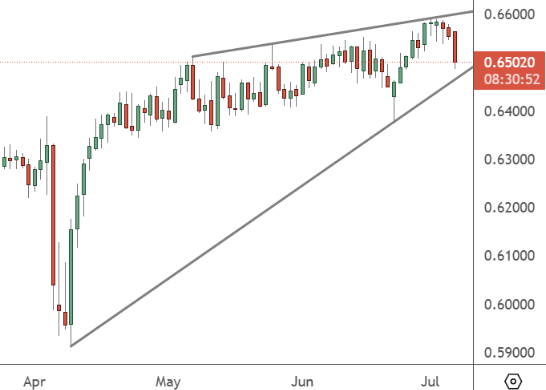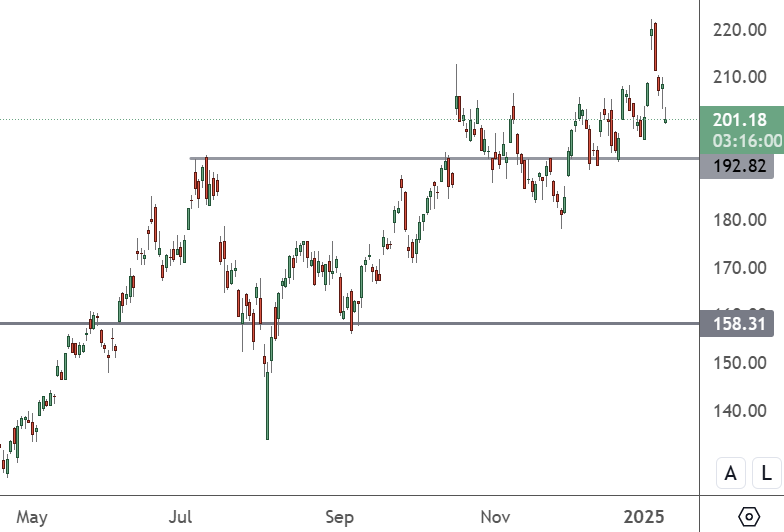The AUDUSD exchange rate was showing some weakness ahead of the Reserve Bank of Australia (RBA) rate decision.

AUDUSD has surrendered five days of gains from a recent push toward the 0.66 level. That sets up a move to test the support line near 0.6450 with the resistance set at the channel high.
The RBA has its rate decision planned for 12:30pm HKT, with the press conference set for 13:30pm HKT.
The currency market was cautious ahead of the RBA decision and the expiration this week of the tariff deadline. That came despite reporting that traders were looking at currencies outside of the euro to short the USD. Bloomberg and the SCMP both covered the story with the yuan, Aussie dollar and Korean won being noted as potential trades.
Dollar-yuan option trading volume was trading at a one-month high last week, while bullish Aussie bets were nine times greater than puts, according to US data.
“The most recent demand in FX options has been a play in USD/CNH lower via dollar put digitals,” said Mukund Daga at Barclays Bank in Singapore. “This has been on the back of the most recent truce pact that US President Donald Trump has signed with China,” he said.
The Australian Financial Review’s quarterly survey showed 32 of 36 economists expected the central bank to reduce its cash rate from 3.85% to 3.6% this week.
There is also an expectation that the RBA will continue to cut rates later in the year, which may mean that the Australian dollar has less room to move higher. Economists note lower inflation and some global economic stress as their reasons for a Tuesday interest rate cut.
“It looks like a no-brainer that the Reserve Bank’s going to cut the cash rate again at its July board meeting,” said AMP deputy chief economist Diana Mousina.
“The cash rate is currently at 3.85 per cent. There’s more than a 90% chance priced into financial markets … that we will see that cut to 3.6 per cent. We do think that the Reserve Bank is going to keep cutting interest rates,” she added.
The RBA said in its May meeting that a “severe downside” scenario was still possible. “There is the possibility that we get another market meltdown,” she said.
“And given that the starting point is already share markets at a record high around the world, increased risk of volatility, investor uneasiness and uncertainty about future economic and trade policy, particularly from the US, you’d have to say there’s a very big risk that markets may fall by 10 per cent or 15 per cent”.
All eyes will be on the RBA statement and then the outlook for tariffs as the deadline passes.


